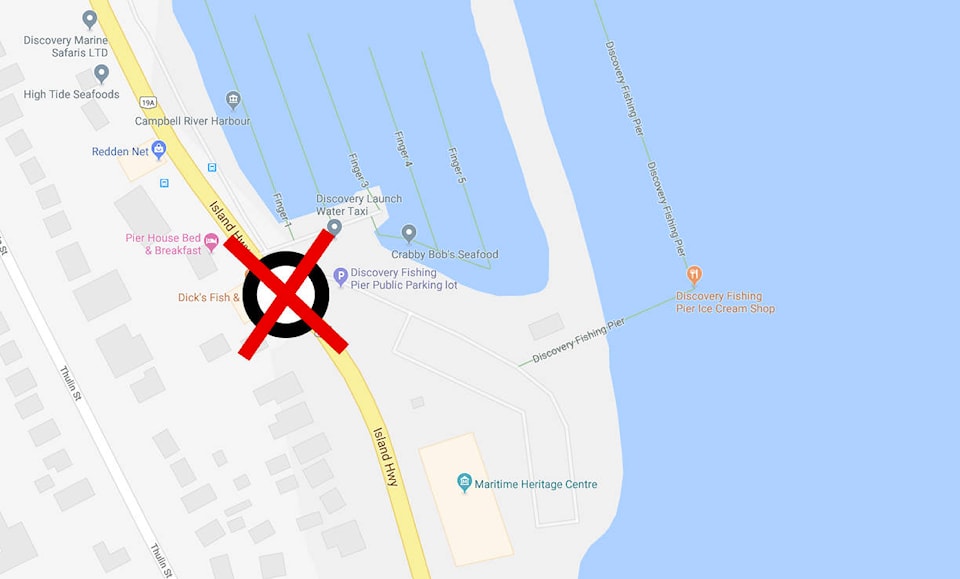“Common sense has prevailed.”
That was the overarching feeling in Campbell River council chambers Monday, as directly expressed by Coun. Charlie Cornfield, after council approved a new design for the intersection at the Maritime Heritage Centre.
And no, it’s not going to be a roundabout.
Council decided in March last year that of the two designs they were presented at the time, a roundabout was the better one, and directed staff to move forward with finalizing the redesign of the intersection.
After much public outcry, then-councilor Marlene Wright tried to re-open the discussion a month later, but that idea was shot down by a majority of sitting councilors.
But this week, council approved a change in direction for the intersection after another design came their way.
“The last council endorsed the staff report which was recommending looking at a roundabout, and staff continued the discussions with the traffic consulting firm, looked at the pros and cons of where the (BC) Hydro kiosk is and where the other barriers and things are, how they were going to get adequate traffic calming coming down the hill, and in their deliberations they came back with recommendations to revisit that plan,” said Mayor Andy Adams after Monday night’s decision.
RELATED: Roundabout likely on its way to Maritime Heritage Centre
RELATED: Round and round we go in the discussion surrounding roundabout
That request by staff was discussed at the Jan. 29 Committee of the Whole meeting, Adams says, at which time it was decided to move forward with an option not on the table when the initial decision was made last year.
As to what that actual design will be, Adams says it’s still in design stage, but will involve additional – and extended – turning lanes, “but also have some kind of flow change coming down the hill from 6th Avenue so that we get people slowing down as they approach the intersection.”
They are also looking at the possibility of installing “some kind of sensors that could trigger a traffic light change if there’s a level of backed up traffic” in the parking lot of the Discovery Pier waiting to turn left onto the road to head south, “but they haven’t quite ironed that out yet.”
What is clear, however, is that whatever the intersection ends up looking like, it will cost “quite a bit less,” than either of the two initial plans they were presented, Adams says.
“The ammended recommendation is a significantly lower cost and can be implemented a whole lot quicker,” Adams says.
While Adams admits that they maybe got this one wrong when it was first decided, he still believes roundabouts, when installed in the proper locations, are the smoothest way to move traffic, and wants the public to know that they will be encountering them in the future.
In the particular case of the Maritime Heritage Centre entrance, he says, “we may have been trying to put a square peg in a round hole.”
“But we already have one very functional roundabout in Campbell River already at Willow Creek Road and it works extremely well,” he continued. “The people in that neighbourhood are well-accustomed to how a roundabout works, but the rest of the people of Campbell River are maybe not. The next phase of the Highway 19 upgrades has a roundabout configured at the bottom of Rockland, and because that’s a bigger footprint, and only a three-way intersection, that may be a better introduction for people to see how it works before putting them in higher-traffic areas.”
